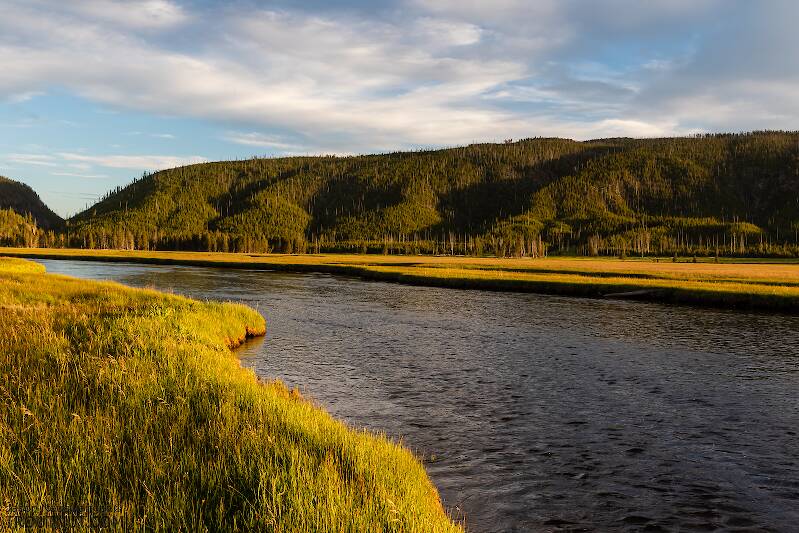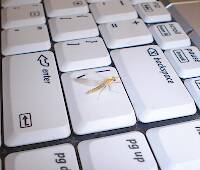
Blue-winged Olives
Baetis
Tiny Baetis mayflies are perhaps the most commonly encountered and imitated by anglers on all American trout streams due to their great abundance, widespread distribution, and trout-friendly emergence habits.
Featured on the forum

Some characteristics from the microscope images for the tentative species id: The postero-lateral projections are found only on segment 9, not segment 8. Based on the key in Jacobus et al. (2014), it appears to key to Neoleptophlebia adoptiva or Neoleptophlebia heteronea, same as this specimen with pretty different abdominal markings. However, distinguishing between those calls for comparing the lengths of the second and third segment of the labial palp, and this one (like the other one) only seems to have two segments. So I'm stuck on them both. It's likely that the fact that they're immature nymphs stymies identification in some important way.

Troutnut is a project started in 2003 by salmonid ecologist Jason "Troutnut" Neuswanger to help anglers and
fly tyers unabashedly embrace the entomological side of the sport. Learn more about Troutnut or
support the project for an enhanced experience here.
NEMatt on May 24, 2014May 24th, 2014, 1:01 pm EDT
Hi,
New to the forum. I've been fishing a few seasons in NH and VT and it's time to start tying.
I'd like to hear what people suggest for a good all-around text for the various hatches, with color, and step by step instruction for tying the patterns.
I've browsed through Hatches II, which seems to be perfect, but it seems to be all black and white. I suppose I could just browse this sight for up-to-date taxon and photos for color input but I'm often out of internet range. I'd sacrifice the color for quality text and just get pictures elsewhere (here).
Thanks in advance for any input.
By the way, Jason - You're an animal! This site is amazing! Thanks for all the work you've put in to this. VERY helpful.
New to the forum. I've been fishing a few seasons in NH and VT and it's time to start tying.
I'd like to hear what people suggest for a good all-around text for the various hatches, with color, and step by step instruction for tying the patterns.
I've browsed through Hatches II, which seems to be perfect, but it seems to be all black and white. I suppose I could just browse this sight for up-to-date taxon and photos for color input but I'm often out of internet range. I'd sacrifice the color for quality text and just get pictures elsewhere (here).
Thanks in advance for any input.
By the way, Jason - You're an animal! This site is amazing! Thanks for all the work you've put in to this. VERY helpful.
Troutnut on May 24, 2014May 24th, 2014, 1:55 pm EDT
Hi Matt,
Welcome to the forum.
For a classic book with good text descriptions for patterns and color illustrations, I would suggest Ernest Schwiebert's "Matching the Hatch."
For imitative flies as opposed to searching flies, I like to get away from following exact patterns for particular insect species. Instead I like to learn styles of tying (as opposed to specific patterns), keep an eye on what's hatching, and tie flies to match the bugs I'm finding as needed. Of course that works best if you're fishing frequently and coming home to your tying bench at night, but it's worth keeping in mind. I think some books point people too much toward following recipes instead of adapting as they go.
If you're interested in learning styles or techniques that you can mix-and-match however you like, I highly recommend two books: The Fly Tier's Benchside Reference by Leeson and Schollmeyer, and Fly-Fishing Pressured Water by Lloyd Gonzales (who goes by Gonzo on this forum). Both books are loaded with step-by-step tying instructions and good pictures: the benchside reference is an encylopedia of techniques for tying parts of flies in every way imaginable, but it doesn't cover whole flies; Lloyd's book contains both techniques and whole flies, and some great insights about fishing too.
Tight lines!
Welcome to the forum.
For a classic book with good text descriptions for patterns and color illustrations, I would suggest Ernest Schwiebert's "Matching the Hatch."
For imitative flies as opposed to searching flies, I like to get away from following exact patterns for particular insect species. Instead I like to learn styles of tying (as opposed to specific patterns), keep an eye on what's hatching, and tie flies to match the bugs I'm finding as needed. Of course that works best if you're fishing frequently and coming home to your tying bench at night, but it's worth keeping in mind. I think some books point people too much toward following recipes instead of adapting as they go.
If you're interested in learning styles or techniques that you can mix-and-match however you like, I highly recommend two books: The Fly Tier's Benchside Reference by Leeson and Schollmeyer, and Fly-Fishing Pressured Water by Lloyd Gonzales (who goes by Gonzo on this forum). Both books are loaded with step-by-step tying instructions and good pictures: the benchside reference is an encylopedia of techniques for tying parts of flies in every way imaginable, but it doesn't cover whole flies; Lloyd's book contains both techniques and whole flies, and some great insights about fishing too.
Tight lines!
Jason Neuswanger, Ph.D.
Troutnut and salmonid ecologist
Troutnut and salmonid ecologist
Entoman on May 24, 2014May 24th, 2014, 2:58 pm EDT
Well said, Jason. Dave Hughes has some basic books out that are excellent as well for instilling a basic understanding of the concepts you outlined.
Also Matt, take advantage of the multitude of video available on YouTube and other venues. They say a picture is worth a thousand words. Well, when it comes to flytying instruction, video's worth a thousand pictures! Wished they were around when I started...:)
Also Matt, take advantage of the multitude of video available on YouTube and other venues. They say a picture is worth a thousand words. Well, when it comes to flytying instruction, video's worth a thousand pictures! Wished they were around when I started...:)
"It's not that I find fishing so important, it's just that I find all other endeavors of Man equally unimportant... And not nearly as much fun!" Robert Traver, Anatomy of a Fisherman
NEMatt on May 24, 2014May 24th, 2014, 3:34 pm EDT
Thanks guys. I'll take both your suggestions.
I'm glad to consider the flexible approach to tying. Makes perfect sense to me.
I'm glad to consider the flexible approach to tying. Makes perfect sense to me.
PaulRoberts on May 24, 2014May 24th, 2014, 7:04 pm EDT
Agree with the "flexible approach" as well. But first, you do have to learn some techniques.
Welcome aboard.
Welcome aboard.
Quick Reply
Related Discussions
Topic
Replies
Last Reply
Make your own fly Reel and other new classes at the CFFCM Arts of the Agnler Show
In General Discussion by Flymom
In General Discussion by Flymom
0
Oct 1, 2009
by Flymom
by Flymom
8
Nov 5, 2020
by Stickstring
by Stickstring
1
Mar 31, 2008
by Lifeaquatic
by Lifeaquatic





